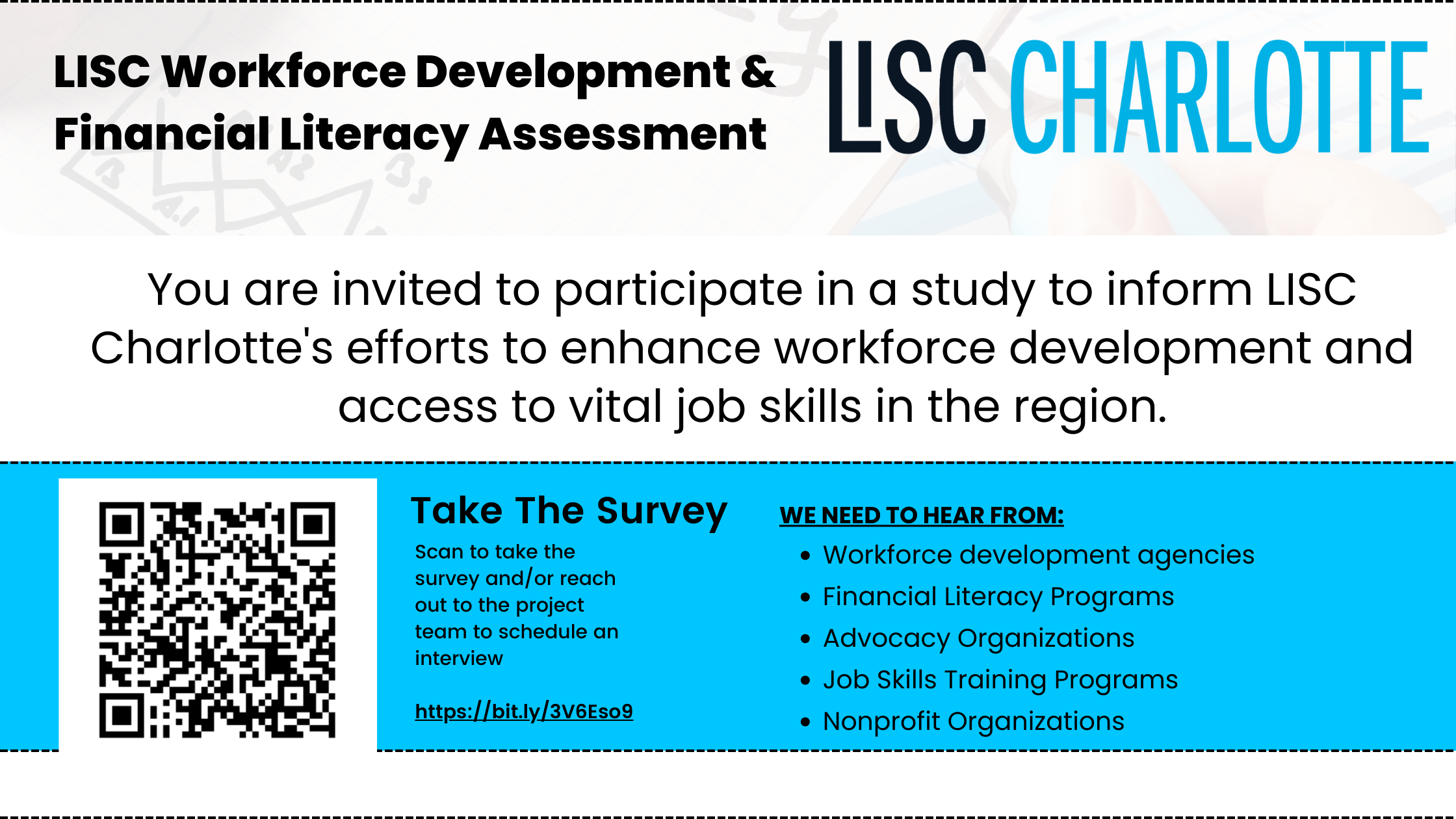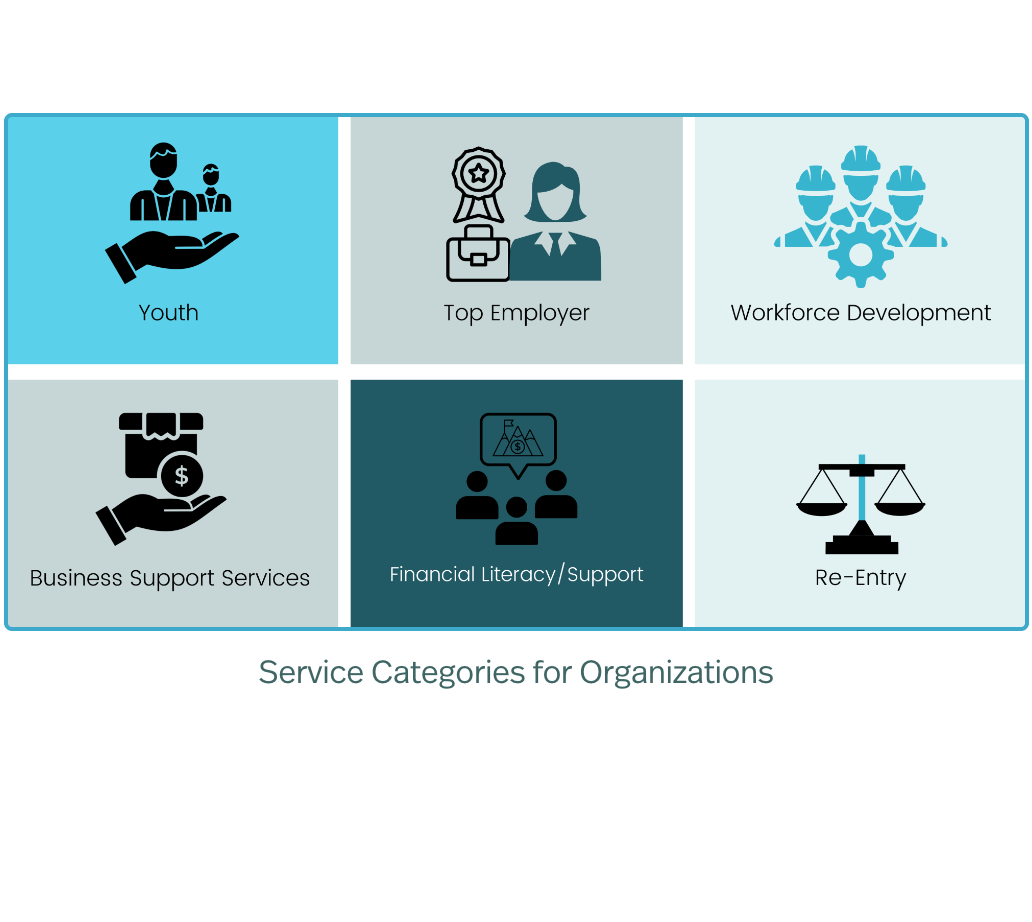LISC Charlotte Workforce Development & Financial Health Assessment 2024
Background
As one of the nation's largest community development enterprises, LISC invests over $1 billion annually into community revitalization, partnering with local organizations to improve financial well-being through coaching, employment counseling, and access to financial products.
The report assesses Charlotte's workforce development, employment training, job placement, financial health, and income support services with a focus on mapping current providers and services that enhance economic mobility for adults and youth.
This research identifies existing resources, challenges, and gaps within the financial literacy and workforce ecosystem, highlighting areas of need for community-based solutions.
What We Did
The research team designed a tailored approach to the LISC Charlotte Financial Opportunity Center model assessment and conducted work in the following phases:
Phase I: RESEARCH
Identifying the various service sectors within the County, these sectors were determined to include Financial Services, Technical Assistance, Job Placement, Workforce Training, Affordable Housing, Mental Health, Education, and Reentry Services.
Utilizing local registries, databases, industry reports, and trade associations, a comprehensive list within each sector was compiled.
Phase II: INTERVIEW
Polling a cross-section of service providers, workforce development organizations, and nonprofit organizations, details were gathered about known activities and programming that support financial health.
Crafting a series of face-to-face engagements, questions were posed to stakeholders a detailed asynchronous survey to conduct and synthesize polling.
Phase III: ANALYZE
Reporting included descriptive statistics for quantitative data collected using a Qualtrics survey.
Convergent and divergent thematic reporting were used for qualitative data such as literature reviews, comments from interviews, and anecdotal evidence.
Phase IV: PRESENT
Sharing data and findings in a comprehensive, user-friendly way that has public-facing capacity was a strong consideration to have applicability and utility outside of current place-in-time implications.
Utilizing platforms that allow geographic identification of identified resources and services allowed for further study and/or review for additional implications.
Media





